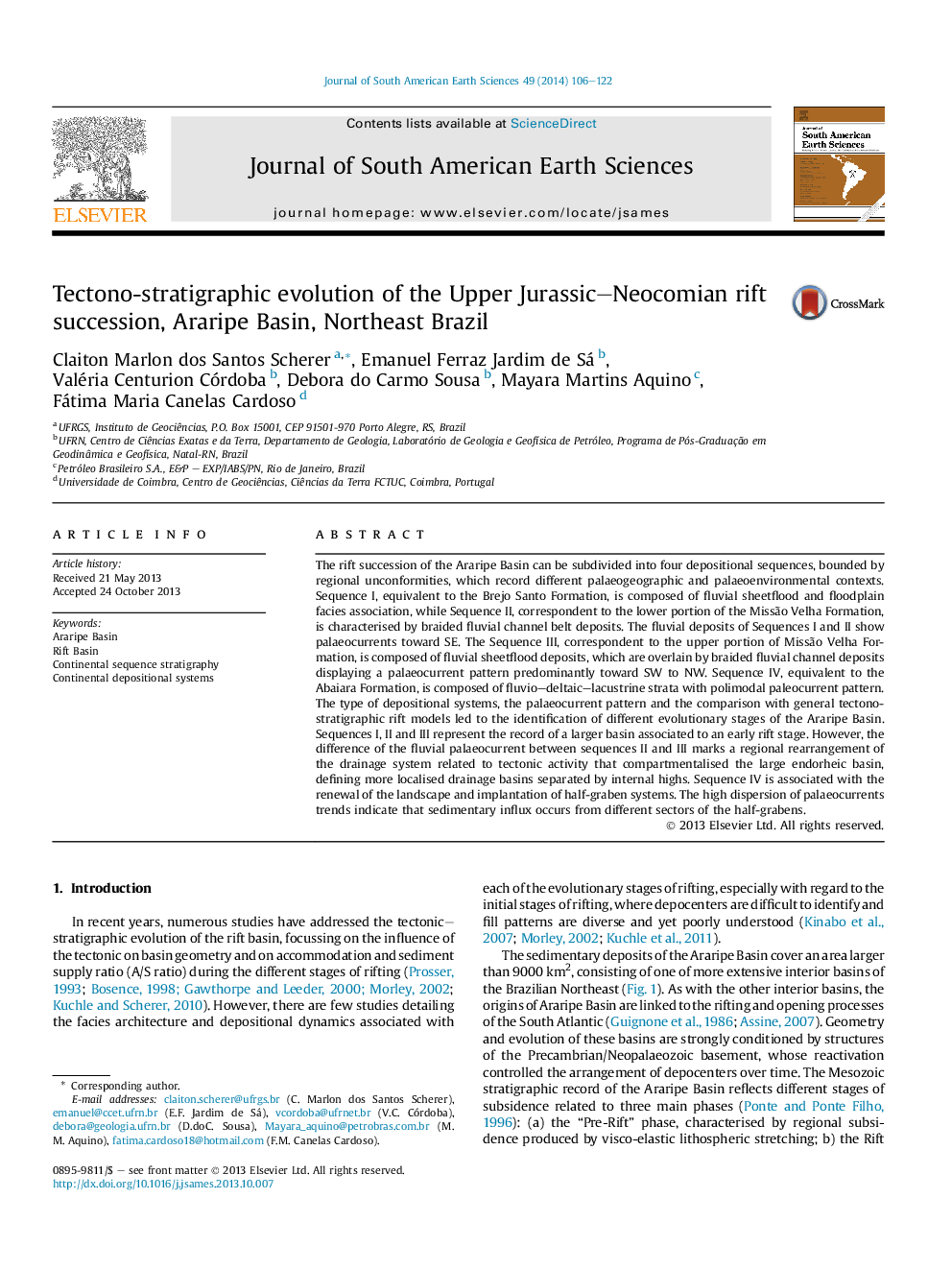| Article ID | Journal | Published Year | Pages | File Type |
|---|---|---|---|---|
| 4682363 | Journal of South American Earth Sciences | 2014 | 17 Pages |
Abstract
The rift succession of the Araripe Basin can be subdivided into four depositional sequences, bounded by regional unconformities, which record different palaeogeographic and palaeoenvironmental contexts. Sequence I, equivalent to the Brejo Santo Formation, is composed of fluvial sheetflood and floodplain facies association, while Sequence II, correspondent to the lower portion of the Missão Velha Formation, is characterised by braided fluvial channel belt deposits. The fluvial deposits of Sequences I and II show palaeocurrents toward SE. The Sequence III, correspondent to the upper portion of Missão Velha Formation, is composed of fluvial sheetflood deposits, which are overlain by braided fluvial channel deposits displaying a palaeocurrent pattern predominantly toward SW to NW. Sequence IV, equivalent to the Abaiara Formation, is composed of fluvio-deltaic-lacustrine strata with polimodal paleocurrent pattern. The type of depositional systems, the palaeocurrent pattern and the comparison with general tectono-stratigraphic rift models led to the identification of different evolutionary stages of the Araripe Basin. Sequences I, II and III represent the record of a larger basin associated to an early rift stage. However, the difference of the fluvial palaeocurrent between sequences II and III marks a regional rearrangement of the drainage system related to tectonic activity that compartmentalised the large endorheic basin, defining more localised drainage basins separated by internal highs. Sequence IV is associated with the renewal of the landscape and implantation of half-graben systems. The high dispersion of palaeocurrents trends indicate that sedimentary influx occurs from different sectors of the half-grabens.
Keywords
Related Topics
Physical Sciences and Engineering
Earth and Planetary Sciences
Earth and Planetary Sciences (General)
Authors
Claiton Marlon dos Santos Scherer, Emanuel Ferraz Jardim de Sá, Valéria Centurion Córdoba, Debora do Carmo Sousa, Mayara Martins Aquino, Fátima Maria Canelas Cardoso,
